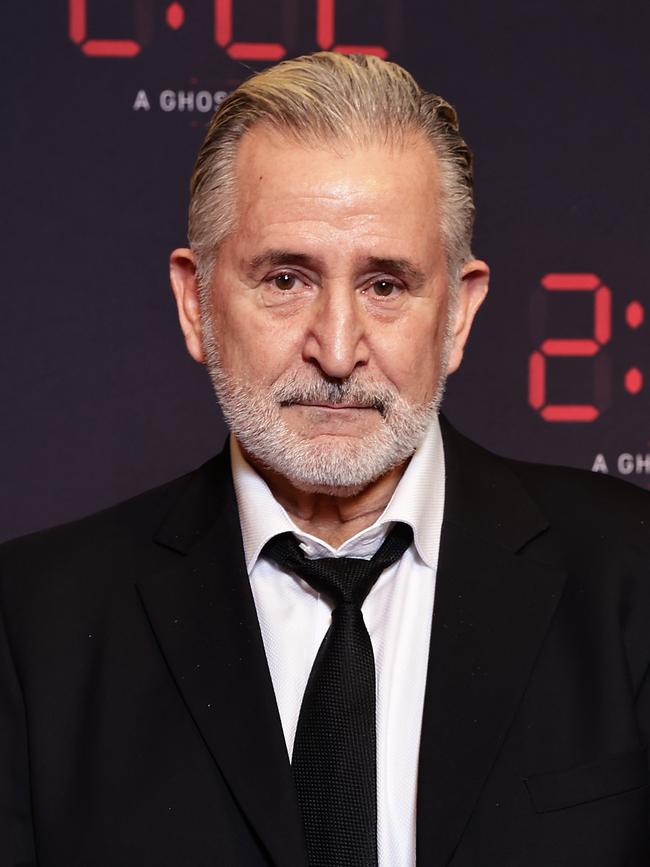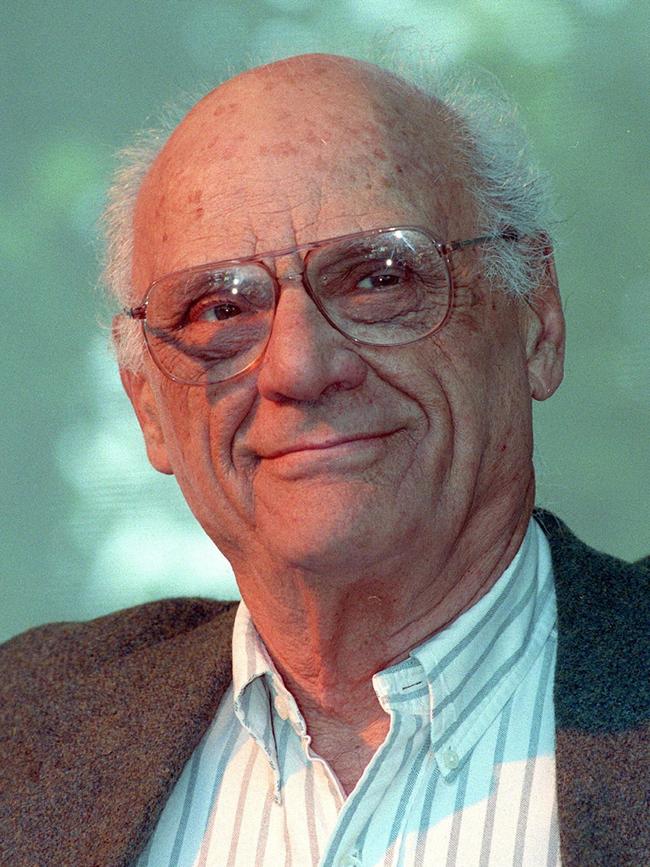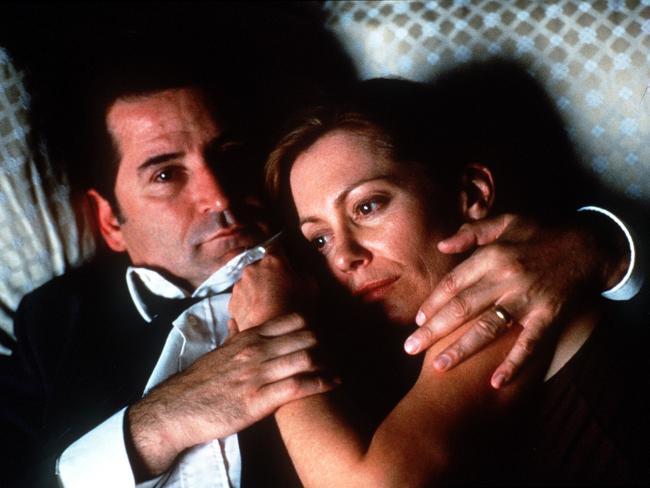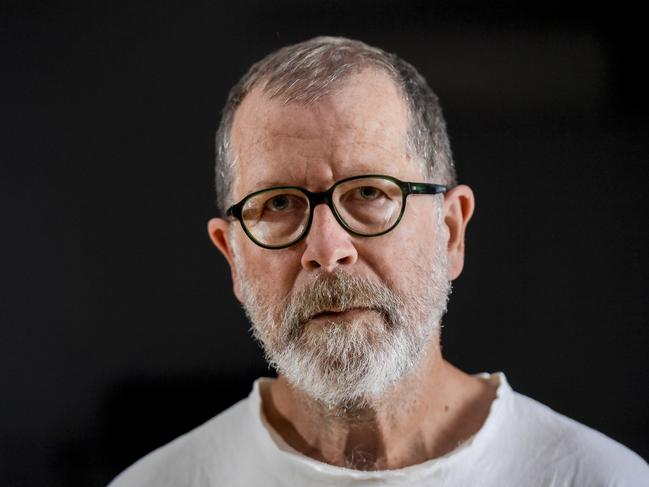Anthony LaPaglia to make Australian stage debut in Death of a Salesman
The Adelaide-born actor (and one-time shoe salesman) talks about his Australian theatre debut in an Arthur Miller classic.

When Anthony LaPaglia was auditioning to play the lead in a Broadway production of Arthur Miller’s A View From the Bridge, in 1997, the playwright thought he was several years too young for the role.
LaPaglia, then 37, was put forward to play the rough Italian immigrant Eddie Carbone, a man in his mid-50s. He did a reading of the play with other actors, which Miller attended.
“Arthur was alive at the time, and he was quite involved with the play – he was at rehearsal a lot,” LaPaglia recalls. “I wanted to do it, because I was young and full of hubris. He was the one who said, ‘I think he’s too young’.
“My agent at the time, (Sam Cohn) … helped put together a cast of people to do a table read for Arthur. He saw it and he said, ‘It’s got a different dimension to it, he’s younger, he’s a bit more of a sexual threat – I like it, you can do it’.”
Miller’s instincts were correct. LaPaglia’s slow-burning performance as Eddie Carbone – a “brooding, physical, exciting presence” is how John Lahr described him in The New Yorker – earned him the Tony Award for best actor in a play.
Age has caught up with LaPaglia as he prepares to play another of Miller’s emblematic roles, Willy Loman in Death of a Salesman. Willy’s age is given as 63, LaPaglia is 64, although age-appropriateness is only one reason audiences will be anticipating this performance. Astonishingly, it will the Adelaide-born actor’s first turn on the Australian stage. Having started his career in the US in theatre, followed by a successful run in film and TV roles, he is belatedly returning to tread the boards at home.

And Death of a Salesman’s Willy is not just any role. He is the cry of anguish from the mid-20th century, a King Lear for the everyman, delusional and disappointed.
The production, playing at Her Majesty’s Theatre in Melbourne from September 1, is directed by Australian theatre legend Neil Armfield. LaPaglia says the double opportunity to play one of modern theatre’s great roles and to work again with Armfield – after their 2015 film, Holding the Man – was too good to pass up.
“Those two things are the things that are making me do it,” he says. “I’ve worked with Neil before, and … whenever I’ve been back in Australia and there’s been a production of Neil’s on, I usually go. I’m always super-impressed with how good they are. Having worked with him in film, and really loving that experience, I felt like, ‘This is next level, working with Neil’. A very attractive thing to do. I was scared of it also – which also made me want to do it.”
There’s a neat coincidence in the fact that LaPaglia, when he was growing up in Adelaide, had an after-school job in a shoe shop. It’s not quite the same as Willy Loman, the travelling rep for a nameless company in Miller’s play, but a salesman nonetheless.
“I was a shoe salesman for a short period of time,” he recalls. “It was a part-time job when I was in high school. I did it for six months full-time, when I was trying to figure out what the heck I was going to do with myself. I had a relatively pleasant experience doing it. I didn’t mind it, I quite liked it. It was better than waiting tables, I can tell you that.”
He missed out on a place at NIDA and studied acting for a time in Adelaide. But he otherwise bypassed the usual rite of passage for Australian actors – soap opera, theatre parts and small film roles – and headed straight to Hollywood, landing a role in Steven Spielberg’s Amazing Stories. He hasn’t looked back.

He does comedy – such as his award-winning guest part as Simon in TV sitcom Frasier – but he seems made for tough-guy roles, swarthy and vaguely threatening, but with a note of vulnerability or ancient hurt. And he has perfected the Brooklyn twang that seems made for Miller’s longshoreman and salesman.
He got to know Miller well during and after his Broadway run in A View From the Bridge, visiting the playwright and his third wife, photographer Inge Morath, at their farm in Connecticut.
“I got to spend time with him and his then wife, Inge Morath, who was a quite well-known photographer,” he says. “I got to know him socially. He had a farm and he’d invite me to the farm. So I got to hear different stories, once he started to open up. For me, it was hearing about Elia Kazan” – the first director of Death of a Salesman at its Broadway premiere in 1949 – “and all these people he grew up with, was married to. Hearing those stories was very interesting, and he told me a lot about his work.”
Miller told him that his reputation in the US suffered after he was made to appear before the House Un-American Activities Committee. Unlike Kazan, he refused to name names and received a sentence for contempt, a conviction overturned on appeal. His experience of the anti-communist interrogations led him to write The Crucible, about the Salem witch trials. Miller’s then wife, Marilyn Monroe, accompanied him to the hearings.

Did Miller talk to LaPaglia about his marriage to Monroe?
“It was not a subject he liked to discuss at all,” LaPaglia says. “He wrote quite extensively about it in (his 1964 play) After the Fall: that’s her, and that’s him, too. I found After the Fall quite remarkable. It’s really how he felt. His inner monologue, and what’s going on with her, are very unflattering to both of them. You have to be pretty honest with yourself to write stuff like that.”
LaPaglia did have the opportunity to learn from Miller about his plays: not only the optimum age for an actor taking on Eddie Carbone or Willy Loman, but the ideal tempo at which to deliver his dialogue. LaPaglia says the key is to not chew over the lines, but to deliver them with some pace, so that actor and dialogue become of a piece.
“The less you labour the lines, the more you just do them, the more the scene comes to life,” LaPaglia says.
“It sounds easy; it’s not easy to get to that point. But once you trust it enough to get to that point – I remember in A View From the Bridge – scenes that you thought were throwaway or nothing scenes suddenly took on a whole new dimension. Allison Janney (Beatrice in A View From the Bridge) was a master at that. She was so good at doing Arthur’s work the way it should be done.”
Armfield says he has observed in LaPaglia a kind of “concentrated pain and stillness” that he brought to Holding the Man, the AIDS-era memoir by Timothy Conigrave about his relationship with John Caleo. LaPaglia played Bob, John’s father. Another performance of LaPaglia’s he admires is the father in Nitram, Justin Kurzel’s film based on the Port Arthur Massacre.

Of LaPaglia’s upcoming performance in Death of a Salesman, Armfield says: “In terms of the feeling of a great part suddenly being there for a great actor – it’s the reason that you do a play … Obviously, there’s an extraordinary history that Anthony has with Miller, having won a Tony in 1998 for his performance as Eddie Carbone. I hadn’t worked with Anthony on stage but I did Holding the Man with him. We had a long conversation and felt that we both wanted to go ahead with this thrilling idea.”
Armfield speaks of Death of a Salesman as a “dream play”, as if the dialogue is all happening in Willy’s head.
“The play shifts between the present and the past so fluidly,” he says. “At times, Willy’s in a conversation with a character from the past, while someone’s talking to him in the present. That poetic energy plays all the way through the show. It’s incredible. I’m trying to find a physical form that connects with and releases that idea.”
The cast also features Alison Whyte as Willy’s wife, Linda, and Josh Helman and Sean Keenan as the sons, Biff and Happy. “I think that’s a brilliant Loman family,” Armfield says. “There is a great sense of pedigree in terms of Australian actors.”
The received interpretation of Death of a Salesman is that it’s an allegory for the American dream, or rather the dream’s false promise. Does that reading of the play ring true with Armfield?

“On the one hand it’s Miller’s great play about his family and his childhood in Brooklyn and the world that he grew up in,” he says. “Ultimately, I think the play is about lies, and the lies that a culture (tells people), which has caused the little people desperately to try and live up to the myth.
“This is a country which has armed its citizenry and fuelled them with hopes that can only lead to disappointment. There’s this desperate anger in (the US), and I think the world is watching while the place kind of falls apart.”
He adds: “The great challenge of our time is how to tell lies from truth. There is this out-of-control development in our culture, particularly through AI and the publishing of lies purporting to be truth. How you tell lie from truth is the great challenge of our time, and that is totally at the heart of Death of a Salesman.”
LaPaglia will soon appear on screen as the drug dealer Tytus Broz in the Netflix adaptation of Trent Dalton’s Boy Swallows Universe. “I try to portray him as in the book, as a very creepy, albino, quite threatening character,” he says. “I think it’s going to be an amazing series.”
The actor says he does not change his technique for his stage or on-screen performances. What’s important to him is to find the truth of a character.
He holds out for the sensation, rare as it may be, when he’s on stage and time seems to stand still.
“That energy, that connection with an audience – without sounding like a wanker – occasionally it happens on a very profound level, but not often,” he says.
“It’s like time is suspended for me. That’s the best way I can describe it. You have a moment where you see a shaft of light, and you see the dust floating through the light. When I see that on stage, I’m having that moment. You become this person, this scene, this action, and it is totally authentic.”
That’s what audiences will be waiting for as LaPaglia begins his belated theatrical homecoming.
Death of a Salesman is at Her Majesty’s Theatre, Melbourne, September 1-October 15.

To join the conversation, please log in. Don't have an account? Register
Join the conversation, you are commenting as Logout